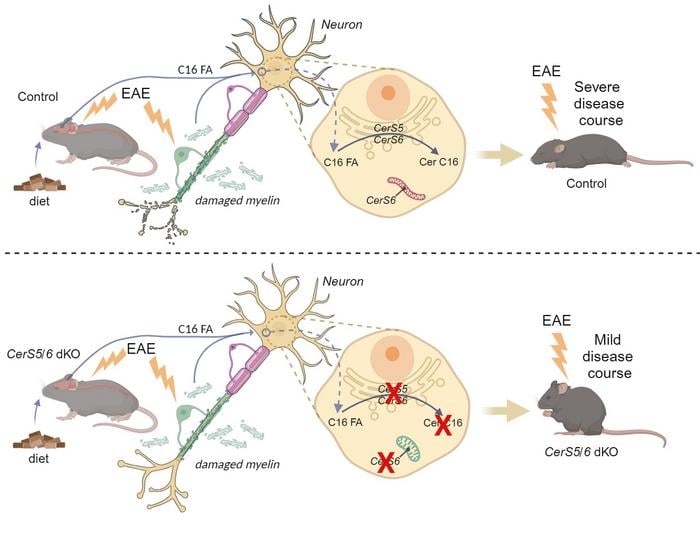Summary: Researchers at CUNY’s Advanced Science Research Center have identified specific enzymes that convert palm oil into toxic substances in neurons, worsening multiple sclerosis symptoms. Their groundbreaking study shows that blocking these enzymes can protect nerve cells, even when consuming a high-fat diet, potentially opening new paths for treatment.
Journal: Glia, November 1, 2024, DOI: 10.1002/glia.24631
Reading time: 4 minutes
A Breakthrough in Understanding MS
Multiple sclerosis (MS) affects millions worldwide, damaging the protective coating around nerve cells and leading to progressive disability. While current treatments focus on controlling the immune system, scientists have now uncovered a crucial link between diet and disease progression.
Research published in the journal Glia reveals how certain dietary fats, particularly palm oil, can make MS symptoms more severe. However, the study also shows a potential way to prevent this damage.
From Palm Oil to Neural Damage
The research team identified a specific chain of events that occurs in nerve cells. As principal investigator Patrizia Casaccia explains: “We reasoned that inside neuronal cells, palm oil is converted into a toxic substance called C16 ceramide by specific enzymes called CerS5 and CerS6. This ceramide is responsible for inflicting mitochondrial damage, which deprives neurons of the energy they need to counteract inflammation in the brain.”
To test their theory, the scientists conducted experiments using a mouse model of MS. As Damien Marechal, co-first author of the paper, notes: “This held true even when mice were fed a diet rich in palmitic acid. This new information points to a specific metabolic pathway through which dietary fats can worsen MS symptoms.”
Hope for Better Treatment
The findings have significant implications for both patients and healthcare providers. “Our research provides a molecular explanation for how to protect neurons from the palm-oil-dependent creation of molecules that harm them,” said Casaccia. “We hope this information can empower patients to make informed dietary decisions that could positively impact the course of the disease, while identifying strategies to counteract the effect of cerS5 and CerS6 in a neuron-specific fashion.”
Technical Terms Glossary
Myelin Sheath: The protective covering around nerves throughout the body that is damaged in MS.
Ceramide: A toxic substance created when certain enzymes process palm oil in nerve cells.
CerS5 and CerS6: Specific enzymes that convert palm oil into harmful ceramides in neurons.
Mitochondrial Damage: Harm to the cellular structures responsible for providing energy to cells.
Test Your Knowledge
1. What type of dietary fat was specifically identified as problematic in the study?
Answer: Palm oil
2. Which enzymes convert palm oil into toxic substances in neurons?
Answer: CerS5 and CerS6
3. What happens when these enzymes are deleted in neurons?
Answer: They could prevent neurodegeneration in the experimental model of MS
4. How does the toxic substance (ceramide) harm neurons?
Answer: By inflicting mitochondrial damage, which deprives neurons of energy needed to counteract inflammation
Enjoy this story? Get our newsletter! https://scienceblog.substack.com/


